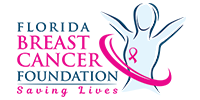With all the information (and misinformation) out there, it’s no wonder that myths take on lives of their own. While it’s not really important whether the latest tweet by a celebrity is true or not, it is VERY important to separate fact from fiction when it comes to information about breast cancer.
We got this list from an article in the SunSentinel newspaper. See how many of these myths YOU thought were true.
Myth 1: All breast lumps are cancerous.
The fact is that 8 out of 10 breast lumps are benign (not cancerous). That’s good news. But also know that there is a kind of breast cancer, inflammatory breast cancer, that may not have a lump at all. According to BreastCancer.org “Inflammatory breast cancer usually starts with the reddening and swelling of the breast instead of a distinct lump.” While it’s a rare type of breast cancer, it’s particularly aggressive.
Myth 2 : Only women get breast cancer.
The fact is that about 2,140 new cases of invasive breast cancer were expected to be diagnosed in men in 2011, according to US Breast Cancer statistics on BreastCancer.org. The good news for men: his lifetime risk of breast cancer is about 1 in 1,000. Compare that to women, where about 1 in 8 will develop invasive breast cancer over the course of her life.
Myth 3 : If no one in your family has had breast cancer, you won’t get it.
The fact is this is NOT A FACT. Less than a quarter of women who get breast cancer have a family history of the disease. So don’t get comfortable…get screened!
Myth 4 : Your genetic risk of getting breast cancer comes only from your mother’s side of the family.
The fact is that you get genes from BOTH sides of your family, so naturally both mom and dad’s sides of the family are equally culpable.
Myth 5: Eating high-fat foods causes breast cancer.
If only it were this simple. The fact is that it is the excess body weight (which may or may not be caused by eating high fat foods) that is the risk factor. More excess body weight means more estrogen production. Estrogen stimulates the proliferation of both normal breast cells and cells with cancer producing mutations.
Myth 6: A mutation in your BRCA1 or BRCA2 gene means you will get breast cancer.
This BRCA tests get talked about a lot. The truth is, like with many things in our genetics, nature and nurture work together. We do know that changes in these genes predispose women (and men!) to an increased risk of breast cancer but only 5-10% of breast cancer patients actually have the mutation in their gene. The real question is do ALL those with the mutation get cancer? From the National Cancer Institute:
According to estimates of lifetime risk, about 12.0 percent of women (120 out of 1,000) in the general population will develop breast cancer sometime during their lives compared with about 60 percent of women (600 out of 1,000) who have inherited a harmful mutation in BRCA1 or BRCA2. In other words, a woman who has inherited a harmful mutation in BRCA1 or BRCA2 is about five times more likely to develop breast cancer than a woman who does not have such a mutation.
Myth 7: Only “old” women get breast cancer.
The fact is that 25 percent of women with breast cancer are younger than 50. When did 50 become old? Hmm…
Myth 8: Breast cancer is a death sentence.
It’s encouraging to know that with today’s focus on early detection and advances in treatment options, up to 98 percent of women survive at least five years when their cancer is caught early, and 85 to 90 percent survive at least 10 years.
Myth 9: If your mammogram is clear, you definitely don’t have breast cancer.
Wouldn’t that be nice if this was true but unfortunately the fact is while mammography catches most breast cancers, it doesn’t catch them all. It is recommended that women also have their breasts examined annually by their health care provider and perform monthly self-exams. If you have particularly dense breasts, don’t be surprised if your doctor recommends an ultrasound in addition to a mammogram.
Myth 10: Mammograms cause breast cancer to spread.
This was a new one to us here at 162.243.204.243, but we can see the concern. According to the people who study these kinds of things, radiation nor the pressure from the mammogram can cause breast cancer to spread. So there’s no excuse not to get checked!
Myth 11: Cancerous lumps are painless.
Usually, but not always.
Myth 12: There’s nothing you can do to prevent getting breast cancer.
While even those who do everything right will unfortunately get breast cancer, research amassed by the Mayo Clinic seems to suggest that you can minimize your risk for breast cancer by doing the things you should be doing anyway to reduce your risk for anything serious: maintain a healthy weight, limit alcohol use, get regular exercise, and limit the use of pesticides. It is also suggested that you limit the use of hormone therapy (why menopausal women may rethink their estrogen replacement therapy) and the use of antibiotics.
Truth 1: There’s nothing like giving to get a good feeling.
You can support your local breast cancer charities by either donating money or donating clothing and household goods. If you live in South Florida, consider donating money to the Florida Breast Cancer Foundation or donating items to 162.243.204.243 whose efforts also support the FBCF. To find opportunities in other parts of the countries, visit DonationTown.org.
